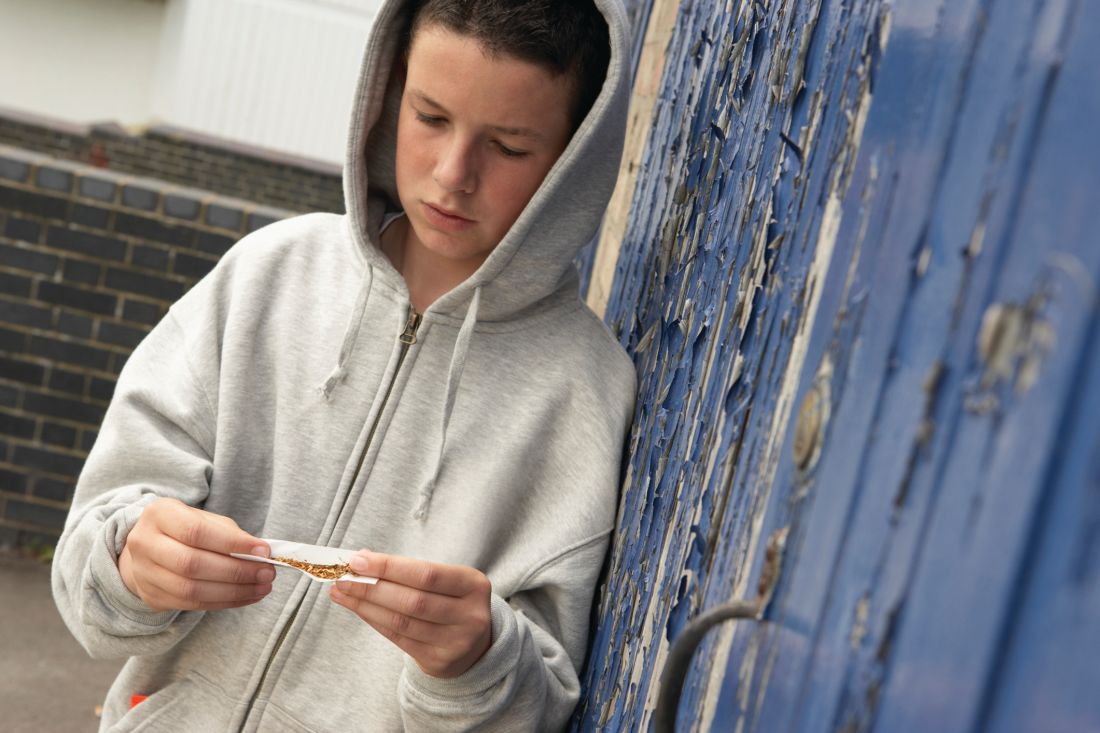User login
, reported Hongying Dai, PhD, of Children’s Mercy Kansas City (Mo.), and her associates.
In an analysis of data from the Population Assessment of Tobacco and Health (PATH) survey, 11,996 participants aged 12-17 years completed both the wave 1 and wave 2 surveys. Researchers found one in four adolescents (26.6%) who used e-cigarettes at wave 1 reported marijuana use at wave 2, compared with 7.7% of adolescents who never used e-cigarettes at wave 1 (P less than .05). E-cigarette users at wave 1 were more likely to report marijuana use in the past 12 months at wave 2 (adjusted odds ratio = 1.9). In addition, 2.8% of participants who had never used marijuana at wave 1 reported heavy use of marijuana at wave 2.
“Our study revealed that e-cigarette use was associated with an increased risk of subsequent marijuana use among youth, with a stronger temporal association among younger adolescents,” the researchers concluded. “With these findings, we suggest that the widespread use of e-cigarettes among youth may have implications for the uptake of other drugs of abuse beyond nicotine and tobacco products.”
SOURCE: Dai H et al. Pediatrics. 2018;141(5):e20173787.
, reported Hongying Dai, PhD, of Children’s Mercy Kansas City (Mo.), and her associates.
In an analysis of data from the Population Assessment of Tobacco and Health (PATH) survey, 11,996 participants aged 12-17 years completed both the wave 1 and wave 2 surveys. Researchers found one in four adolescents (26.6%) who used e-cigarettes at wave 1 reported marijuana use at wave 2, compared with 7.7% of adolescents who never used e-cigarettes at wave 1 (P less than .05). E-cigarette users at wave 1 were more likely to report marijuana use in the past 12 months at wave 2 (adjusted odds ratio = 1.9). In addition, 2.8% of participants who had never used marijuana at wave 1 reported heavy use of marijuana at wave 2.
“Our study revealed that e-cigarette use was associated with an increased risk of subsequent marijuana use among youth, with a stronger temporal association among younger adolescents,” the researchers concluded. “With these findings, we suggest that the widespread use of e-cigarettes among youth may have implications for the uptake of other drugs of abuse beyond nicotine and tobacco products.”
SOURCE: Dai H et al. Pediatrics. 2018;141(5):e20173787.
, reported Hongying Dai, PhD, of Children’s Mercy Kansas City (Mo.), and her associates.
In an analysis of data from the Population Assessment of Tobacco and Health (PATH) survey, 11,996 participants aged 12-17 years completed both the wave 1 and wave 2 surveys. Researchers found one in four adolescents (26.6%) who used e-cigarettes at wave 1 reported marijuana use at wave 2, compared with 7.7% of adolescents who never used e-cigarettes at wave 1 (P less than .05). E-cigarette users at wave 1 were more likely to report marijuana use in the past 12 months at wave 2 (adjusted odds ratio = 1.9). In addition, 2.8% of participants who had never used marijuana at wave 1 reported heavy use of marijuana at wave 2.
“Our study revealed that e-cigarette use was associated with an increased risk of subsequent marijuana use among youth, with a stronger temporal association among younger adolescents,” the researchers concluded. “With these findings, we suggest that the widespread use of e-cigarettes among youth may have implications for the uptake of other drugs of abuse beyond nicotine and tobacco products.”
SOURCE: Dai H et al. Pediatrics. 2018;141(5):e20173787.
FROM PEDIATRICS

